Spit and Lap
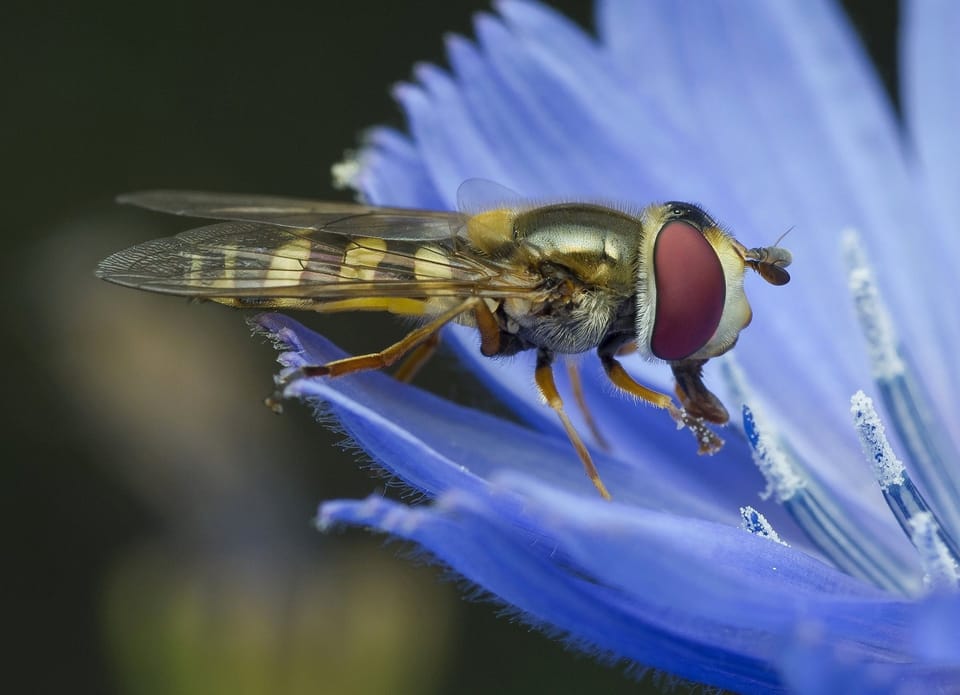
Have you ever noticed a fly landing on your plate and promptly vomiting a drop of spit on your food? It's beyond disgusting, and it's one of the ways that flies spread diseases, but there's a fascinating story here—so brace yourself and read on!
We can begin by pointing out that insects have relatively simple stomachs. As a result, many species "spit" digestive juices into their food so enzymes can begin breaking down food even before an insect starts eating.
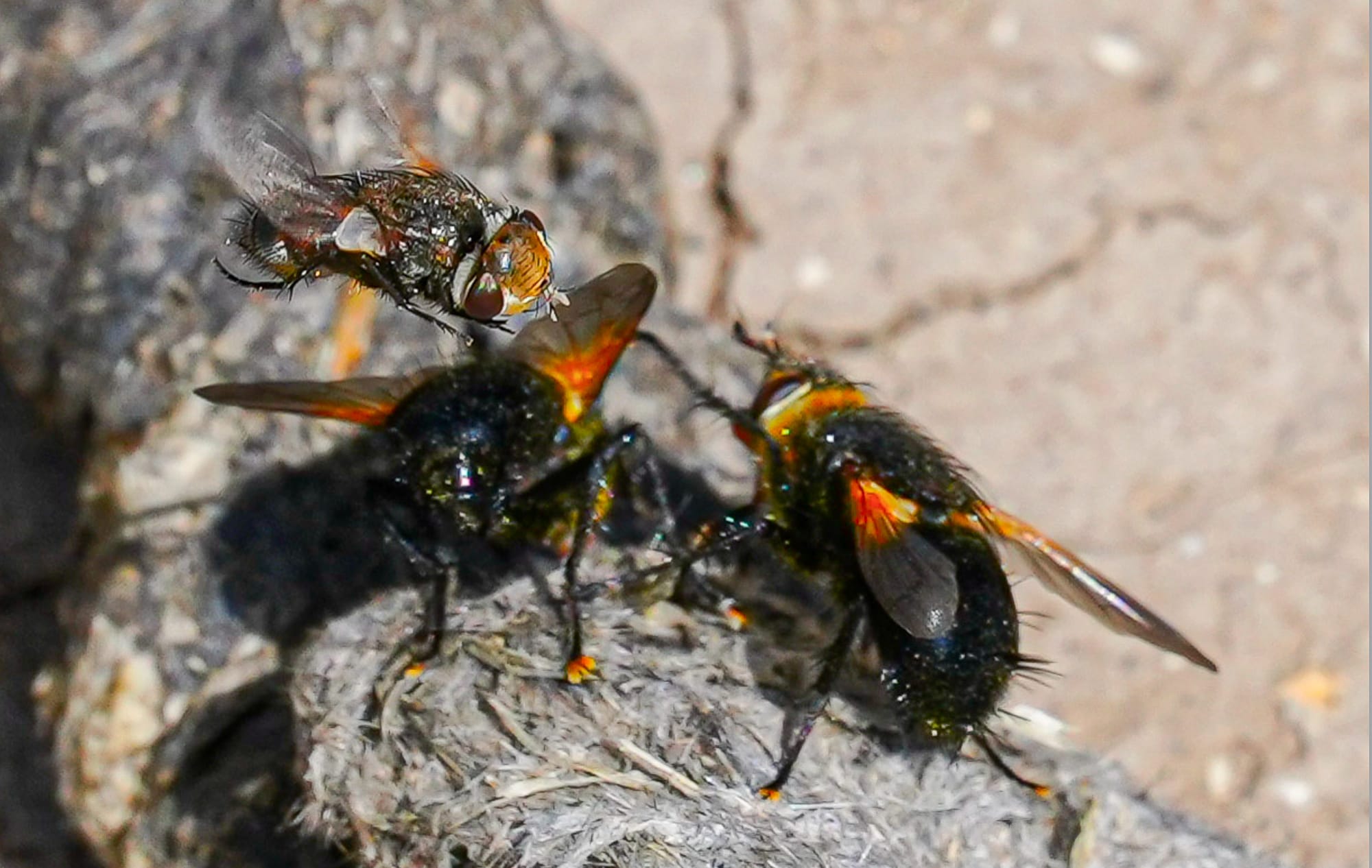
In fact, a huge number of flies have sponge-like mouthparts, and they specialize on using a "spit and lap" technique to sponge, or lap up, their food. For example, if a food is solid, flies will first spit on it, then lick up the food as it begins to dissolve.
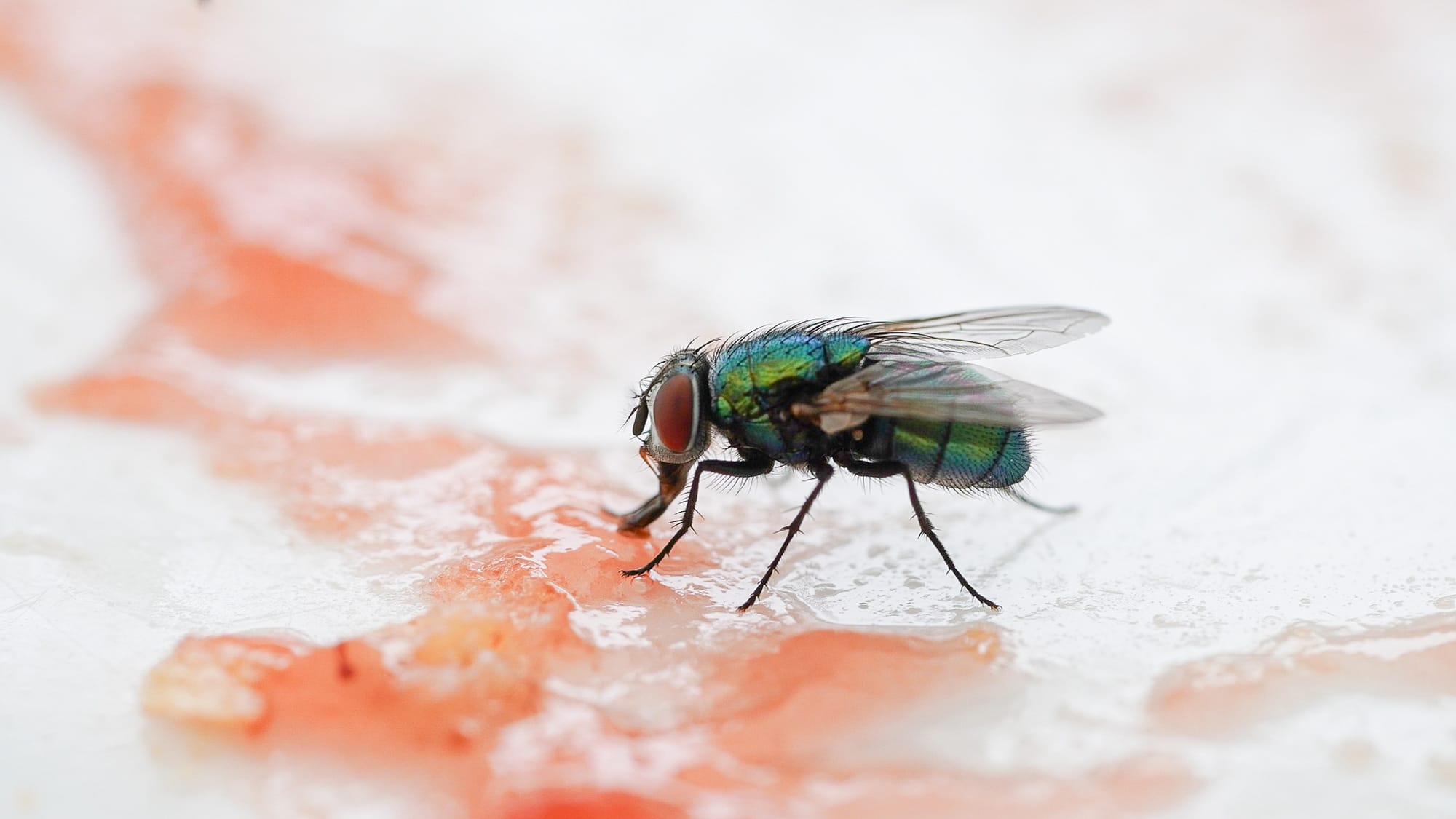
Or, if the food is already a liquid, a fly may lap up the liquid, mix it with digestive juices, spit it back out, then lap it up again after its digestive enzymes have started breaking the food down. Or it may let a droplet of digesting food hang from its mouth to evaporate off water, so the liquid won't take up as much space in their stomachs.
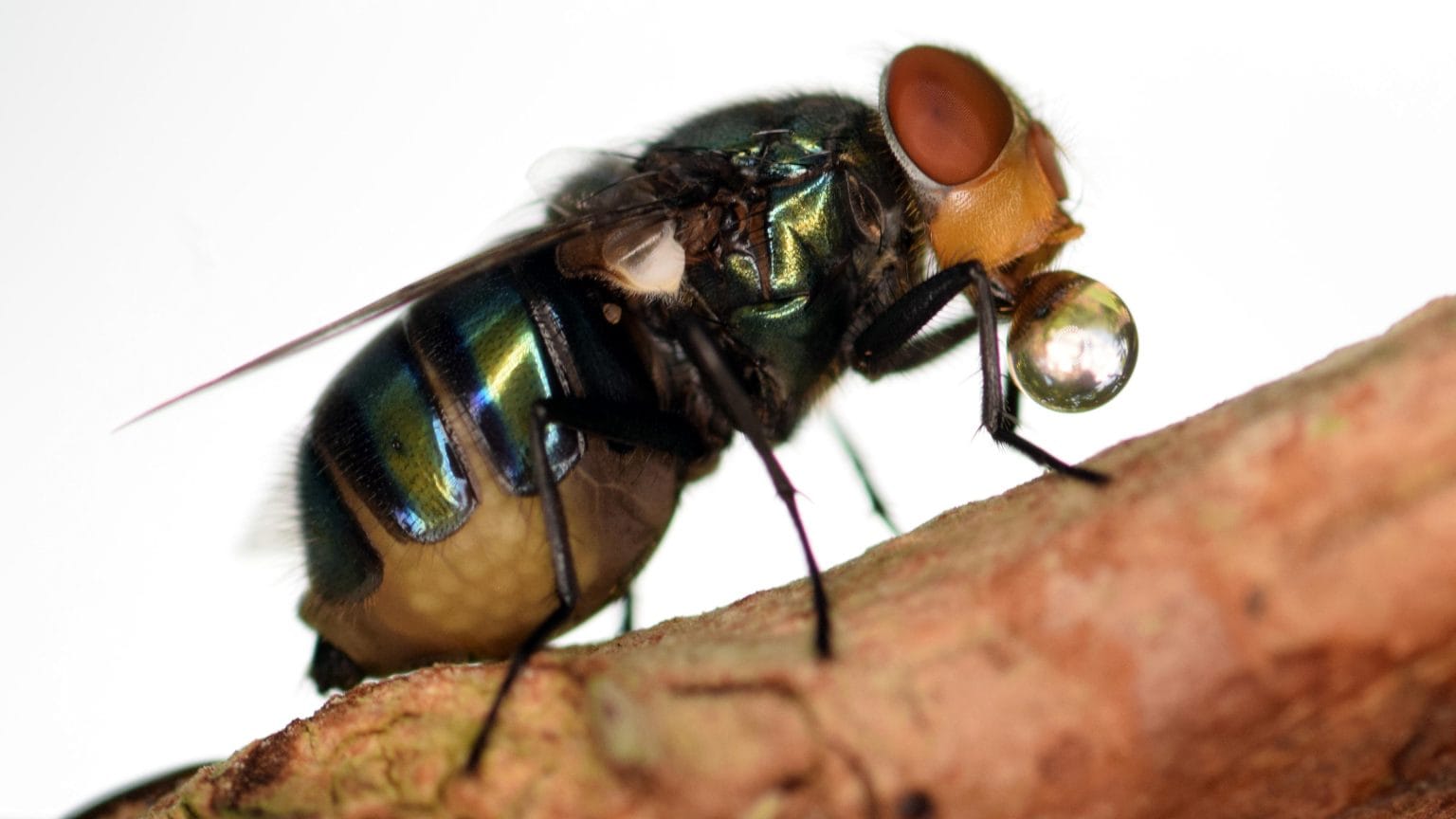
This is all weirdly cool, but it isn't the story that fascinates me. What fascinates me is the way that many flowers have evolved to take full advantage of a fly's "spit and lap" behavior.
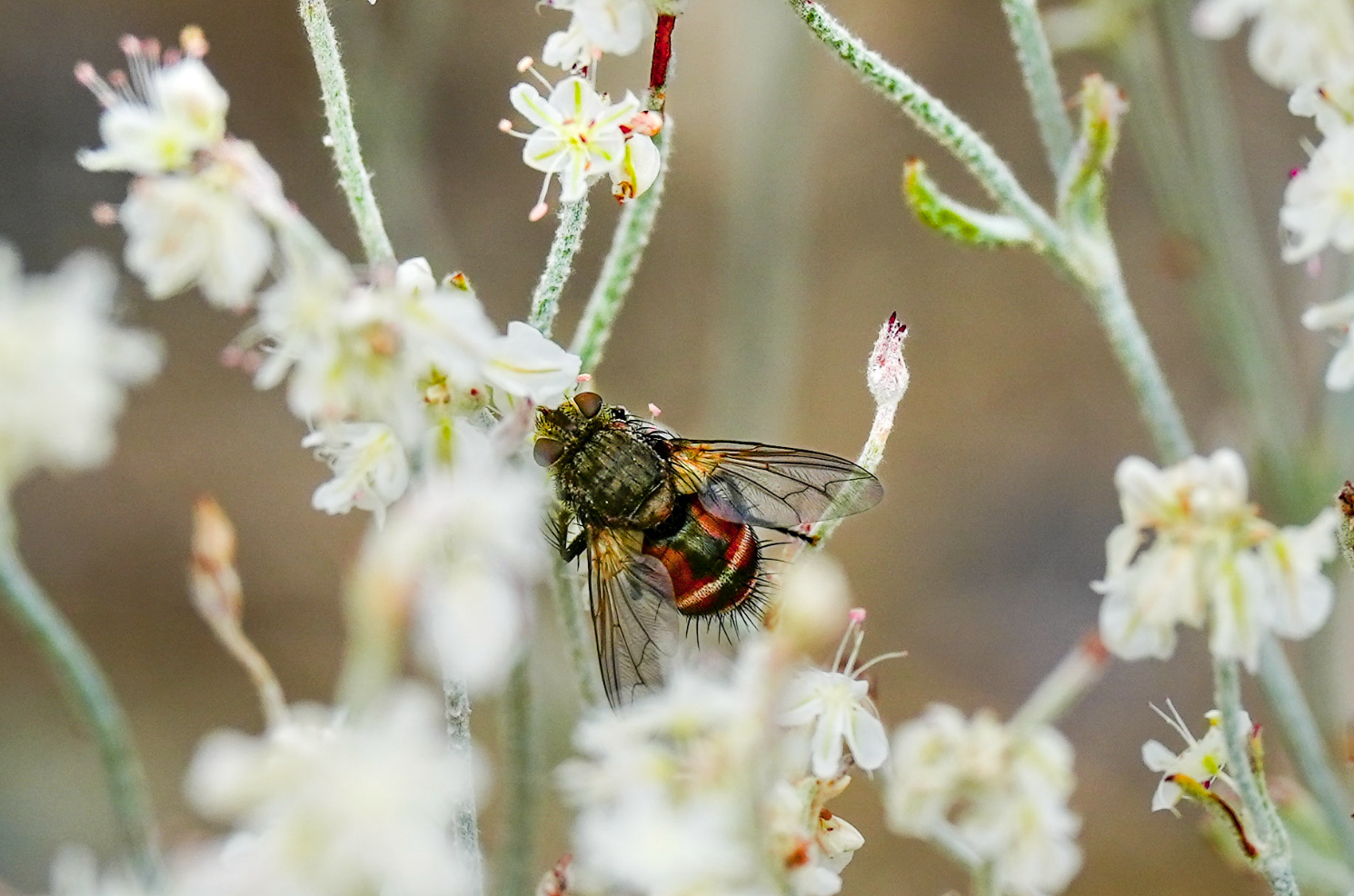
The problem for flowers is that nectar is water-based, and on hot, dry days the water tends to evaporate, turning a flower's nectar into thick syrup, or even into sugar crystals. Unfortunately for flowers, many pollinators (such as hummingbirds, butterflies, and bees) sip nectar through long, straw-like mouthparts, so when nectar turns into syrup these pollinators can no longer drink the nectar, or it takes so long that it's no longer an efficient way to feed.
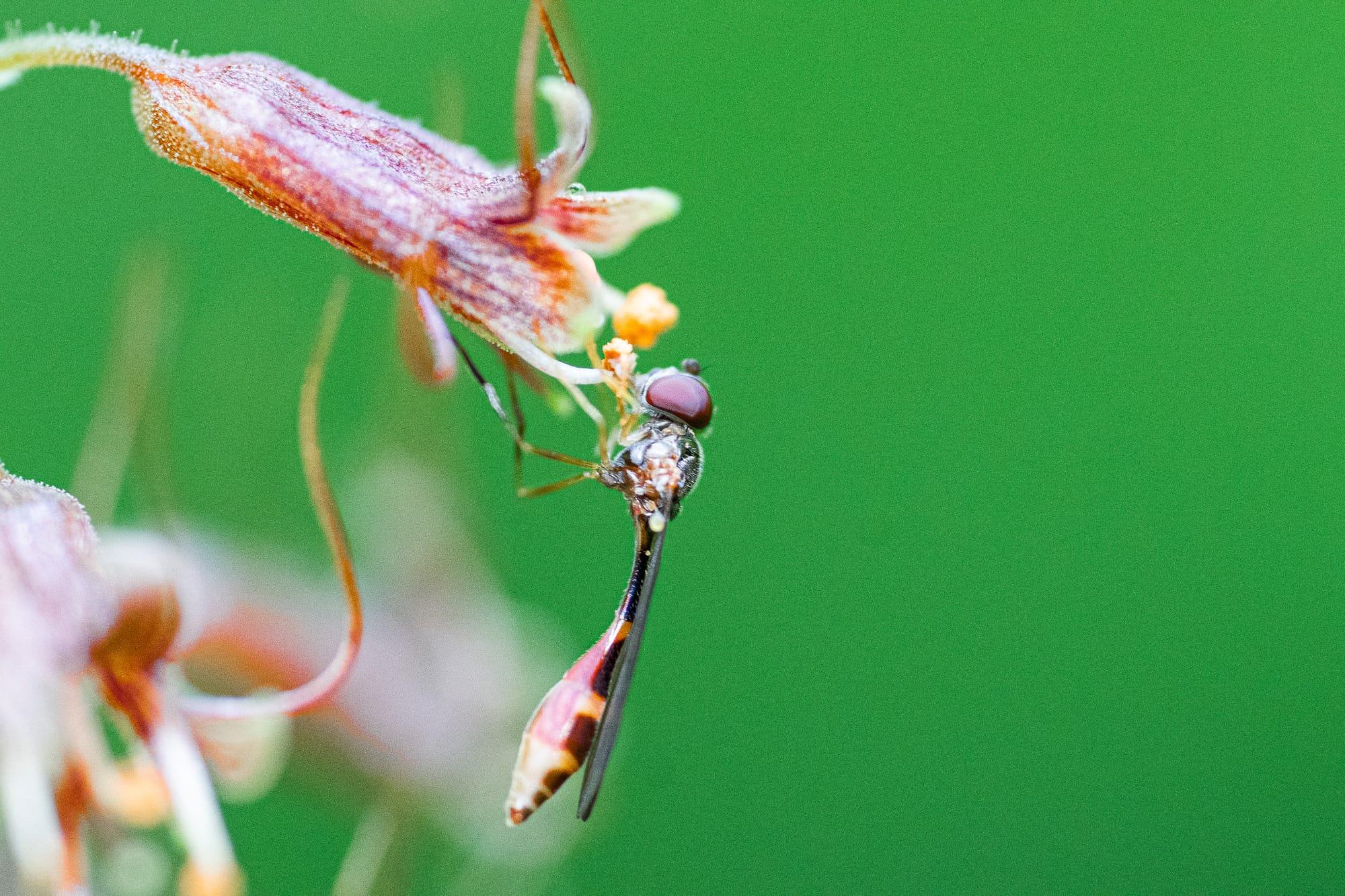
This could dramatically reduce the number of pollinators visiting a flower, but flies are dependable visitors because they can always lick up nectar no matter how thick it gets. Flies are even able to spit on, then sponge up, fully crystallized nectar that no other pollinator can use.
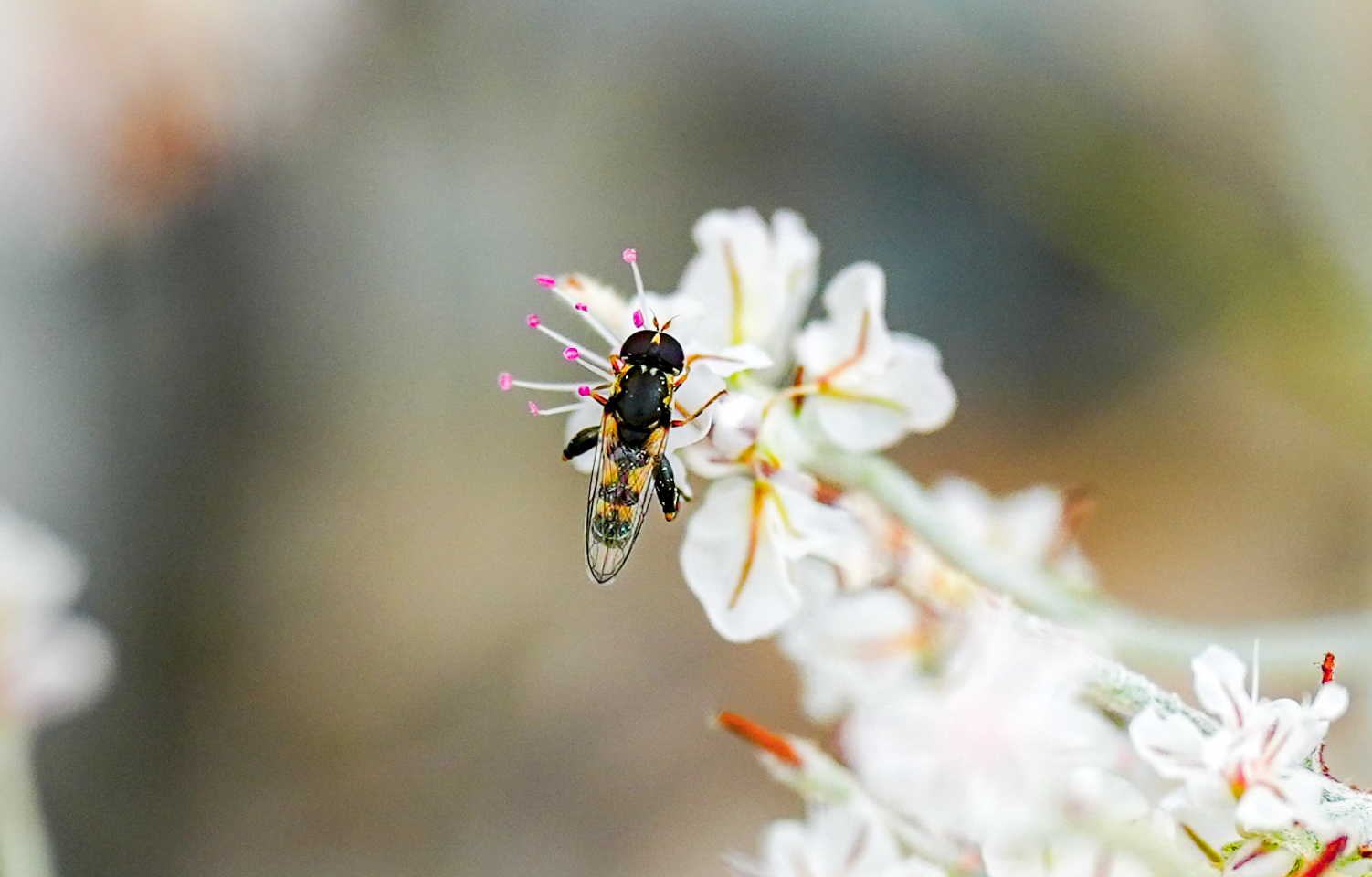
The result of this unique partnership is that flies have become incredibly important pollinators, and in some areas (or at certain times of year) they may be the only pollinators.
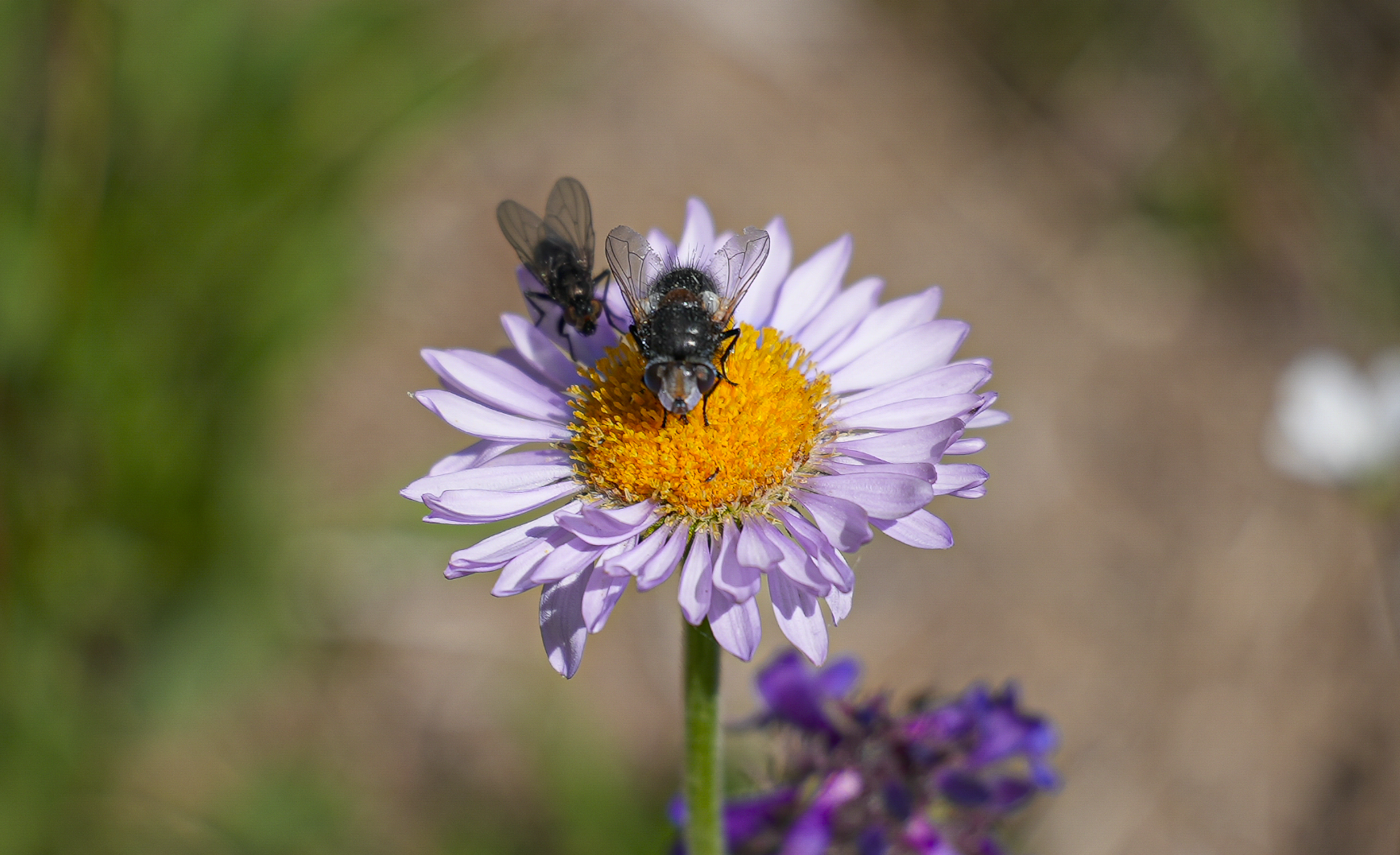
It's interesting to consider how so many of the world's flowers have come to depend on a specialized strategy that we easily dismiss as "gross," and I hope that helps the next time you see a fly land on your food!

Member discussion